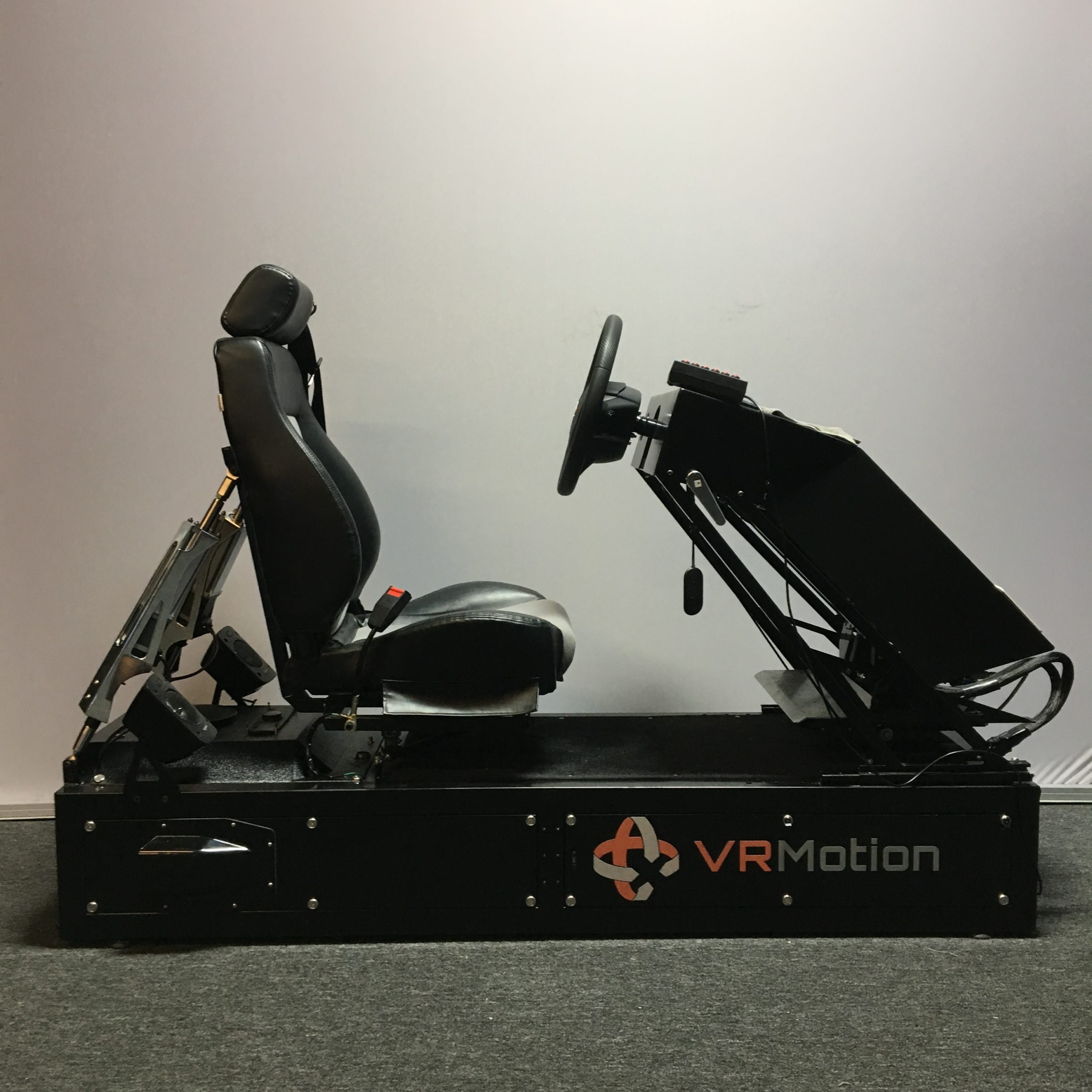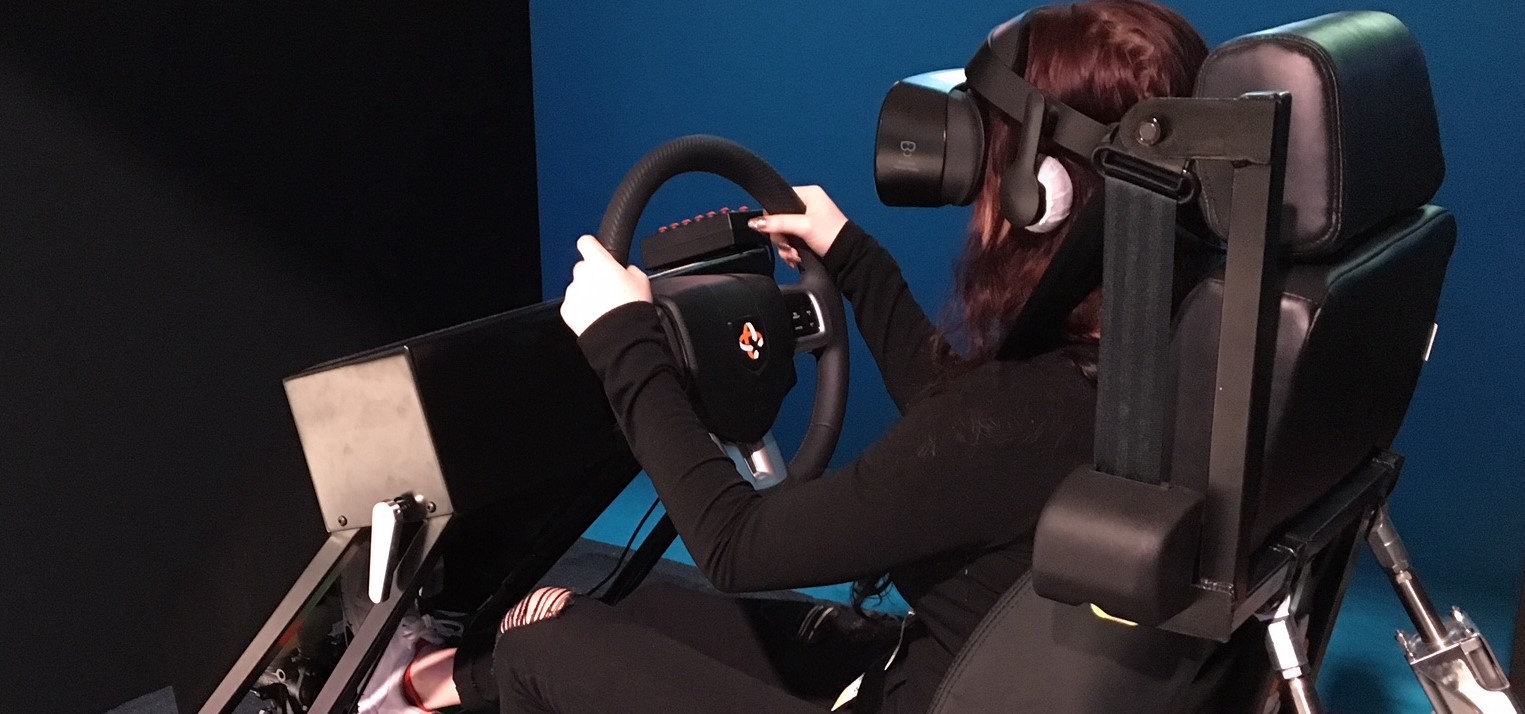We are very focused on auto racing simulation here at CXC Simulations. But, we are involved in other projects where we are able to utilize our team’s knowledge of driving simulation. One such project is working with VR Motion Corporation, based just outside of Portland in Hillsboro, Oregon.
CXC’s team of engineers and development drivers are fanatical about recreating the sensation of being on a race track with our Motion Pro II. The combination of motion and visual systems, in concert with the right software, makes for a compelling racing simulation that has been used time and time again by race car drivers to take seconds off their lap times and improve their race craft.
But while CXC focuses on racing, what VR Motion does is build simulation software that trains teen drivers and fleet drivers and pairs that simulation software with the Motion Pro II. VR Motion Corporation co-founder and COO Dominic Dobson knows a thing or two about driving and proper training – in a racing career that spanned two decades, he competed in seven consecutive Indianapolis 500s and raced at Le Mans, Daytona, Sebring and the Baja 1000.
“One of our primary customer bases is clients that have fleet driving needs,” said Dobson. “Military, law enforcement, truck fleets, delivery fleets – people who drive for a living. Proper training is becoming more and more important as roads get more crowded and drivers are becoming more and more in demand. In addition to that, we have a large customer base that services the teen driver market, where there is a lot of movement towards better training and improved safety for young drivers.”
The benefits for those drivers are the same as for race car drivers – a no-risk environment, exposure to new and unfamiliar situations, and building muscle memory – but instead of racing on a track, VR Motion’s software puts the drivers in driving scenarios on city roads, highways and freeways. This also allows drivers to safely experience an emergency scenario such as a sudden snowstorm or a blown tire.
 VR Motion Corporation’s software allows for training in a variety of vehicles to ensure a driver experiences the correct vehicle dynamics and sightlines for their training. The family sedan will not look or feel like an ambulance or an 18-wheeler.
VR Motion Corporation’s software allows for training in a variety of vehicles to ensure a driver experiences the correct vehicle dynamics and sightlines for their training. The family sedan will not look or feel like an ambulance or an 18-wheeler.
“One of the significant benefits of simulation training are the ability to have a build muscle memory, and the only way that is learned is by repetitive action,” said Dobson. “Think of how your body learns to ride a bike or hit a baseball. We have the ability through simulation to put people in situations they don’t want to be in so they understand how to handle them – it’s about efficiently teaching someone in a lot less time.”
Also similar to working with race car drivers on the CXC Coaching Station is how VR Motion Corporation can compare a driver’s performance to previous racing simulator sessions.
“The other thing that’s really important is to record everything, and create a data file for each driver,” said Dobson. “Tracking a driver’s traits and tendencies is difficult with behind-the-wheel training, but with the VR Motion Corporation simulator we can do that. We create a measurement that is factually based. And with those standards, we can measure a driver’s performance very objectively and check it against previous simulator sessions.
“What we have discovered is that what people do in the simulator is what they do in the real world. When a driver says he is checking his blind spots and scanning his gauges, we can track where they are looking. That’s of great interest at the instructional level, whether it’s a teen driver preparing for their license test or a professional driver like an ambulance driver or police officer.”
To learn more about VR Motion Corporation, visit www.VRMotionCorp.com.
Configure your CXC Simulations Motion Pro II today.

